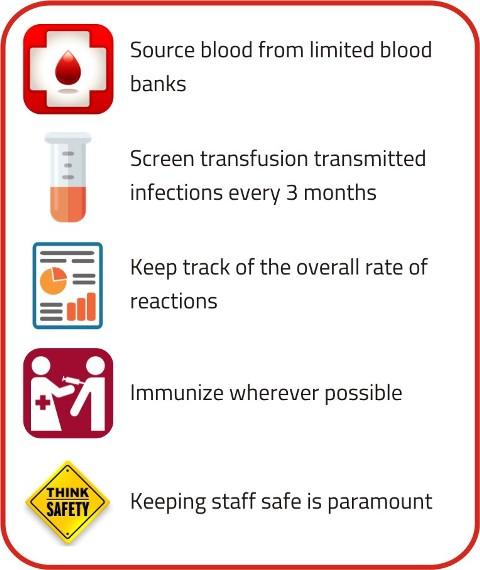Recently, there was a news of 35 patients who were undergoing regular management for thalassemia in Civil Hospital Jalandhar being detected with Hepatitis C. This is not the first time such news has come out in open. This news comes as a shock. Can something be done?

Often, post the breaking of a news of large number of patients getting TTIs, there is a fair amount of short term media attention, public debate, blame game and worst of all fear and distrust among the stake-holders. However, such revelations only point to the failure of a proper strategy to prevent and handle such occurrences. At the end of the day, it is very questionable what end benefit do such expose bring. Without the ability to pinpoint the real reasons, often the culprit humans, procedures or equipment go undetected. Instead, the process tends to wrap itself up with demands for more expensive and complicated tests and adoptions of newer technologies. On a longer run, this is harmful to the system.
Without going into the details of this one episode, we are sharing some simple steps which could be followed by organisations involved in care and management of thalassemia to minimise and monitor transfusion transmitted infections(TTI). We hope and believe that these steps will help strengthen the overall care and management for thalassemia all over the country.
Source blood from limited blood banks
We should ensure that blood for the children who are undergoing thalassemia management is sourced from limited number of blood banks preferably a single one. Those blood banks which rely heavily or totally on voluntary blood donors and those which are known and reputed to be rigorous in their adherence to the guidelines for blood transfusions medicines tend to be safer sources for blood.
The events of the child receiving blood from other blood banks should be kept as low as possible. Such transfusions could be dangerous because we still have some blood banks operational which have very poor track record of pursuing quality and safety. Additionally, if the patients receive blood from multiple blood banks, the chances are that in the unfortunate event of a TTI being detected in future, connecting the dots backwards to the source of infection becomes impossible. Each unit transfused should be carefully recorded with the blood bag number, date of collection and name of the source blood bank for each patient in a reliable and traceable manner.
Screen for transfusion transmitted infections every 3 months
This is in-line with the recommendations for chronically transfused patients. Testing the patient for HIV, Hepatitis-B and Hepatitis-C every 3 months leads to early identification of the TTIs. When a new patient joins the centre, they should be screened for TTI so as to differentiate between infections acquired after joining the centre and those which the patient came with.
If a child has acquired an infection, the institution could proactively look at the transfusion history and try to establish a potential source. It is scientifically impossible to point to a single source with certainty, but such an exercise helps limit the potential sources to selected few and provide valuable insights. If repeated pattern is seen, with children acquiring TTI in-spite of sourcing blood from selected blood bank exclusively, it indicates the need to review the donor recruitment and blood screening strategy.
Keep track of the overall rate of TTIs
Keeping track of the overall TTI rate is a very powerful strategy. It makes it possible to benchmark the rate of infections with peers a time tested and effective way to identify abnormal situations effectively. This also allows picking up changes in the TTI rates soon after some change has contributed to it . Sometimes, recent changes like change in the test kits, technology for screening, change in operator etc. could be linked to increased rate of reactions giving valuable insights into the root cause of the issue.
Immunize wherever possible
Hepatitis-B is one of the infections against which immunisation is now universally available in India. It's very essential that the centre ensures that all patients who are receiving regular transfusions are immunised adequately.
Keeping staff safe is paramount
A very compelling reason to ensure regular monitoring of TTI in chronically transfused patient is the safety of the staff members. Just because patients suffering from inherited blood disorders like thalassemia do not present themselves as sick children (if well managed and taken proper care of), the staff should not become negligent towards personal safety.
Every procedure should be done in-line with the guidelines to prevent exposure to patient's blood. If there is accidental exposure to patient's blood like it happens in case of needle stick injuries, immediately the guidelines for post-exposure prophylaxis should be followed. The staff must be kept aware of the patient’s TTI status. However, the need to ensure that the patients do not feel stigmatized and singled out cannot be over stressed. Proper sensitization of the team on handling patient with TTI and regular training on the same is essential.
We hope this is helpful. More suggestions are invited.
